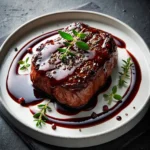White wine vinegar is a staple in kitchens worldwide, known for its versatility and delicate flavor profile. It’s used in everything from salad dressings to marinades, and even as a cooking aid to enhance the flavors of various dishes. In this article, we’ll explore three important aspects of white wine vinegar: its uses, how to make a delicious white wine vinegar dressing, and the connection between this ingredient and more expensive varieties of wine.
White Wine Vinegar: The Kitchen Essential
White wine vinegar is made from white wine that has undergone fermentation, turning the alcohol into acetic acid. It has a milder, more delicate flavor than other vinegars like red wine vinegar, making it an excellent choice for recipes where you want the tanginess of vinegar without overpowering other flavors. It’s often used in Mediterranean cooking, lending a subtle sharpness to dishes such as vinaigrettes, soups, and even risottos.
Benefits and Uses
-
Salad Dressings White wine vinegar is a key ingredient in many vinaigrettes due to its light and crisp acidity. It pairs well with a variety of oils and herbs.
-
Marinades It’s perfect for marinating fish or chicken, as it helps tenderize the meat and adds a bright flavor.
-
Pickling White wine vinegar is often used for pickling vegetables, imparting a mild tang that doesn’t overpower the freshness of the ingredients.
-
Sauces and Soups A splash of white wine vinegar can elevate sauces, soups, and stews by adding a layer of acidity that balances richness.
-
Cleaning Beyond the kitchen, white wine vinegar is also useful as a natural cleaning agent due to its acidic properties.
Practical Tips
White wine vinegar is very versatile, but it’s important to use it in the right proportions. Too much vinegar can make a dish too sharp, so always start with a small amount and adjust to taste.
👉 Learn more about white wine vinegar uses 👈
White Wine Vinegar Dressing: A Classic and Versatile Recipe
One of the most popular ways to use white wine vinegar is in making a simple, yet flavorful vinaigrette dressing. This classic dressing is a perfect match for salads, roasted vegetables, and even grilled meats. Its tangy yet smooth flavor enhances the dish without overshadowing the other ingredients.
Basic White Wine Vinegar Dressing Recipe
-
Ingredients
-
3 tablespoons white wine vinegar
-
1/2 cup extra virgin olive oil
-
1 teaspoon Dijon mustard
-
Salt and pepper to taste
-
1/2 teaspoon honey (optional for sweetness)
-
-
Method
-
In a small bowl or jar, whisk together the white wine vinegar and Dijon mustard.
-
Slowly add the olive oil while whisking to emulsify the mixture.
-
Season with salt and pepper to taste, and add honey if you prefer a sweeter dressing.
-
Shake or stir well before using.
-
-
Variations
-
Add fresh herbs like basil, thyme, or parsley for a more aromatic dressing.
-
For a creamier dressing, mix in a tablespoon of Greek yogurt or mayonnaise.
-
Why It Works
This dressing strikes the perfect balance between acidity and richness. The vinegar cuts through the oil’s richness, while the mustard acts as an emulsifier, helping the ingredients come together smoothly. You can experiment with the proportions to suit your personal taste preferences.
👉 Discover more vinaigrette recipes 👈
Expensive White Wine and Its Connection to Vinegar
Interestingly, white wine vinegar is often linked to high-quality wines, especially because it’s made from wine. But does the quality of the wine influence the vinegar? The short answer is yes. Just as expensive wines are made from carefully selected grapes, higher-quality white wine produces a vinegar that has a more nuanced flavor profile. Some premium white wine vinegars are aged in wooden barrels, giving them a complexity that cheaper varieties lack.
The Role of Expensive Wines in Vinegar
-
Wine Quality Premium wines are made from top-grade grapes and undergo strict fermentation processes. When used to make vinegar, they impart a richer, more refined flavor to the final product.
-
Aging Process Just like wine, white wine vinegar can be aged in wooden casks. This aging process can add depth and complexity, making the vinegar more aromatic and flavorful.
-
Price Range Expensive white wine vinegars can cost much more than standard varieties. They’re often used in gourmet kitchens and high-end restaurants to add a subtle but distinct layer of flavor to dishes.
How to Choose the Right Vinegar for Your Dish
While expensive white wine vinegar is ideal for fine dining or dishes where vinegar is a star ingredient, you don’t always need to splurge. For everyday cooking, a reasonably priced bottle will work just fine. However, if you’re preparing a special dish or want to elevate your cooking, investing in a higher-end vinegar might be worth it.
👉 Explore premium white wine vinegars 👈
Conclusion
White wine vinegar is a culinary tool that should not be underestimated. Whether you’re using it in a light vinaigrette, a tangy marinade, or experimenting with a high-quality variety to enhance a dish, this versatile ingredient plays an essential role in kitchens worldwide. Its balanced acidity and subtle flavor make it ideal for many types of cuisine, and its relationship with fine wines and vinegar aging practices adds another layer of intrigue for food enthusiasts. So next time you’re cooking, don’t forget the magic of white wine vinegar—it might just elevate your dish to new heights!






